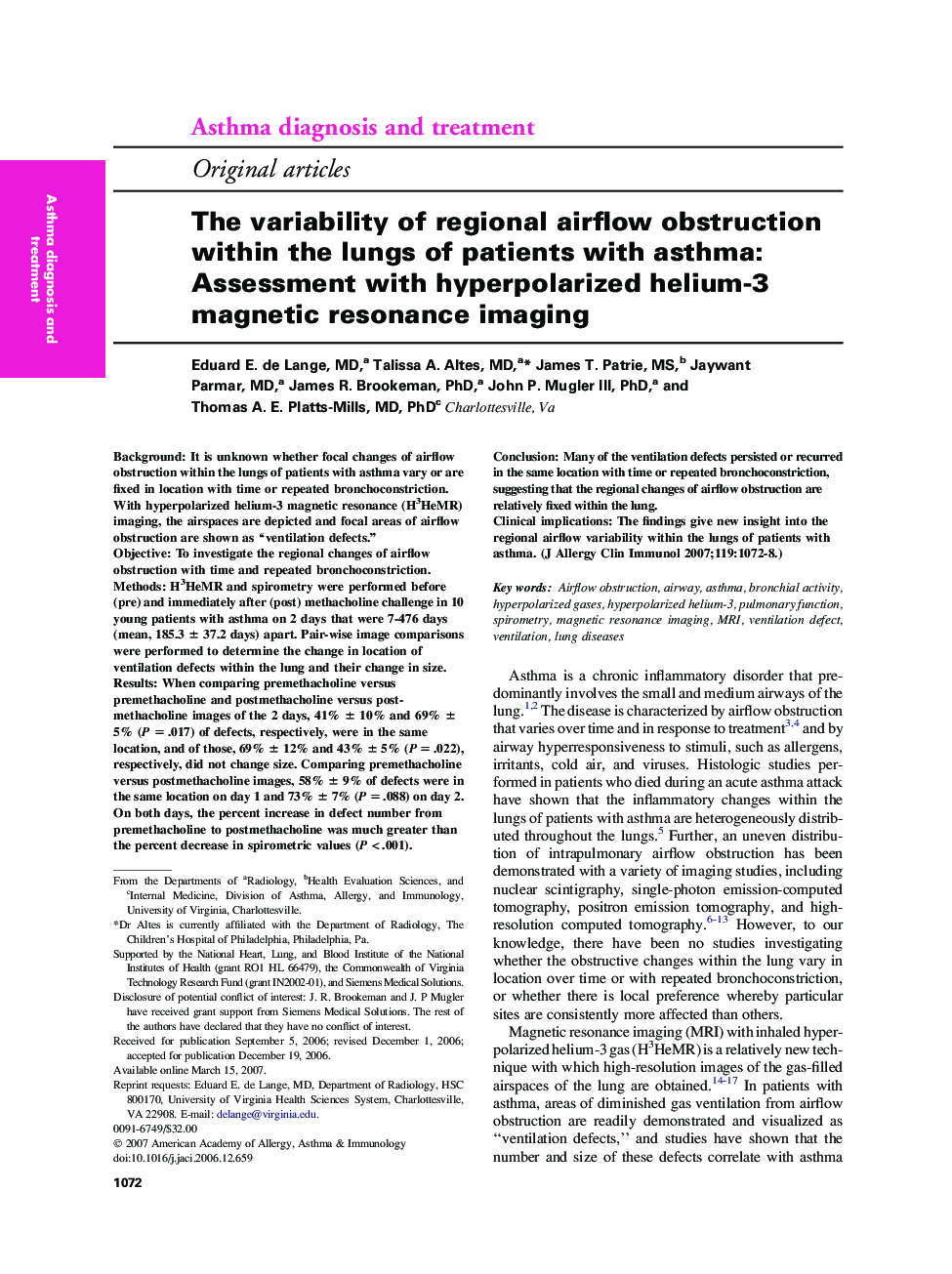| Article ID | Journal | Published Year | Pages | File Type |
|---|---|---|---|---|
| 3201782 | Journal of Allergy and Clinical Immunology | 2007 | 7 Pages |
BackgroundIt is unknown whether focal changes of airflow obstruction within the lungs of patients with asthma vary or are fixed in location with time or repeated bronchoconstriction. With hyperpolarized helium-3 magnetic resonance (H3HeMR) imaging, the airspaces are depicted and focal areas of airflow obstruction are shown as “ventilation defects.”ObjectiveTo investigate the regional changes of airflow obstruction with time and repeated bronchoconstriction.MethodsH3HeMR and spirometry were performed before (pre) and immediately after (post) methacholine challenge in 10 young patients with asthma on 2 days that were 7-476 days (mean, 185.3 ± 37.2 days) apart. Pair-wise image comparisons were performed to determine the change in location of ventilation defects within the lung and their change in size.ResultsWhen comparing premethacholine versus premethacholine and postmethacholine versus post-methacholine images of the 2 days, 41% ± 10% and 69% ± 5% (P = .017) of defects, respectively, were in the same location, and of those, 69% ± 12% and 43% ± 5% (P = .022), respectively, did not change size. Comparing premethacholine versus postmethacholine images, 58% ± 9% of defects were in the same location on day 1 and 73% ± 7% (P = .088) on day 2. On both days, the percent increase in defect number from premethacholine to postmethacholine was much greater than the percent decrease in spirometric values (P < .001).ConclusionMany of the ventilation defects persisted or recurred in the same location with time or repeated bronchoconstriction, suggesting that the regional changes of airflow obstruction are relatively fixed within the lung.Clinical implicationsThe findings give new insight into the regional airflow variability within the lungs of patients with asthma.
